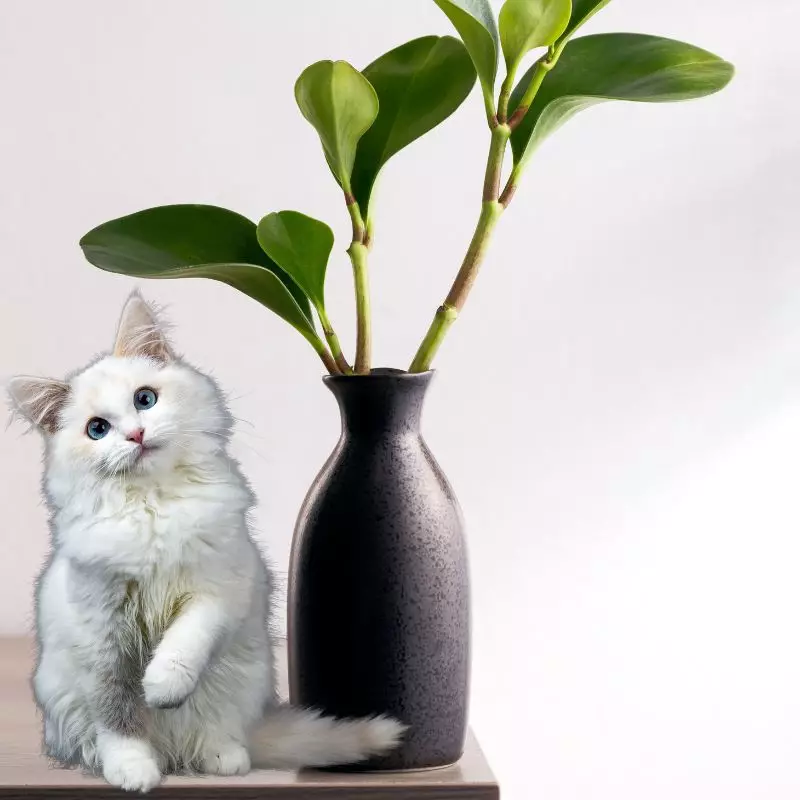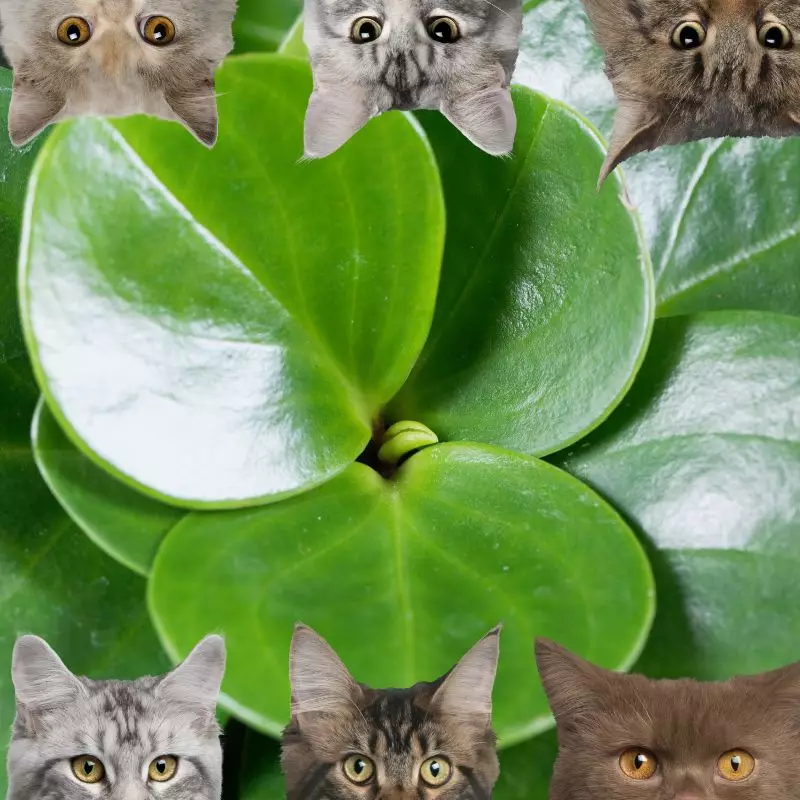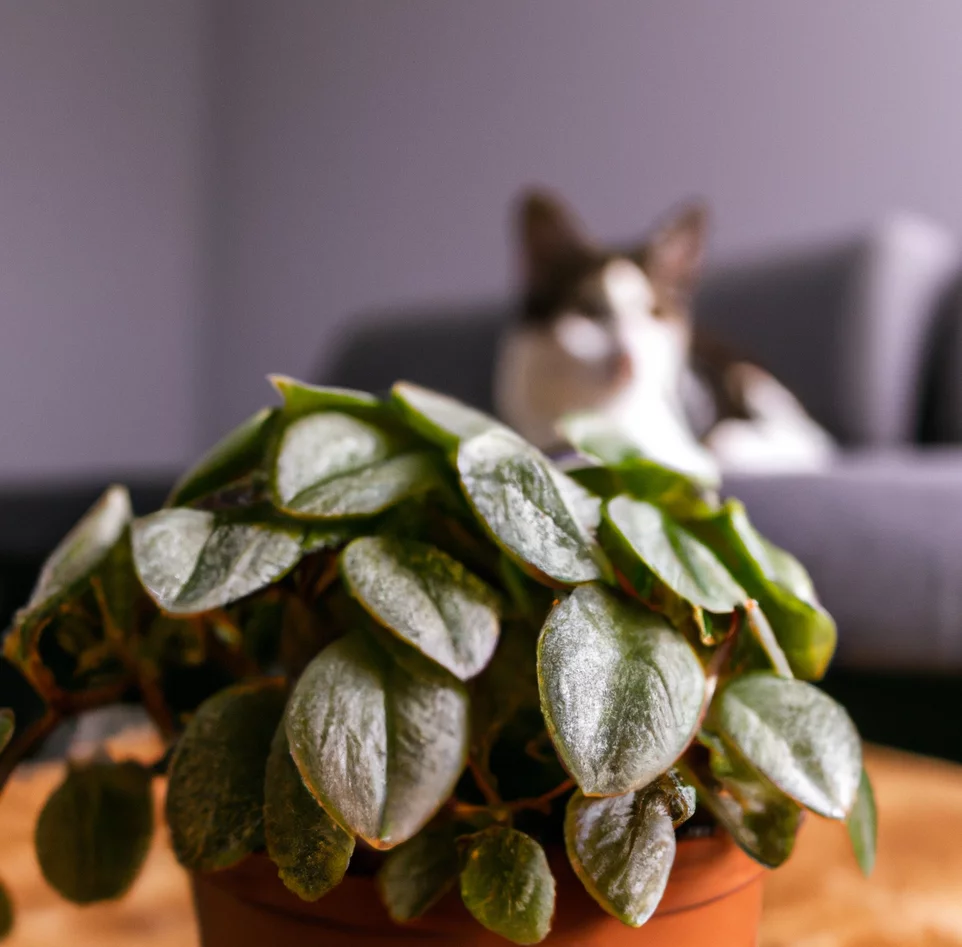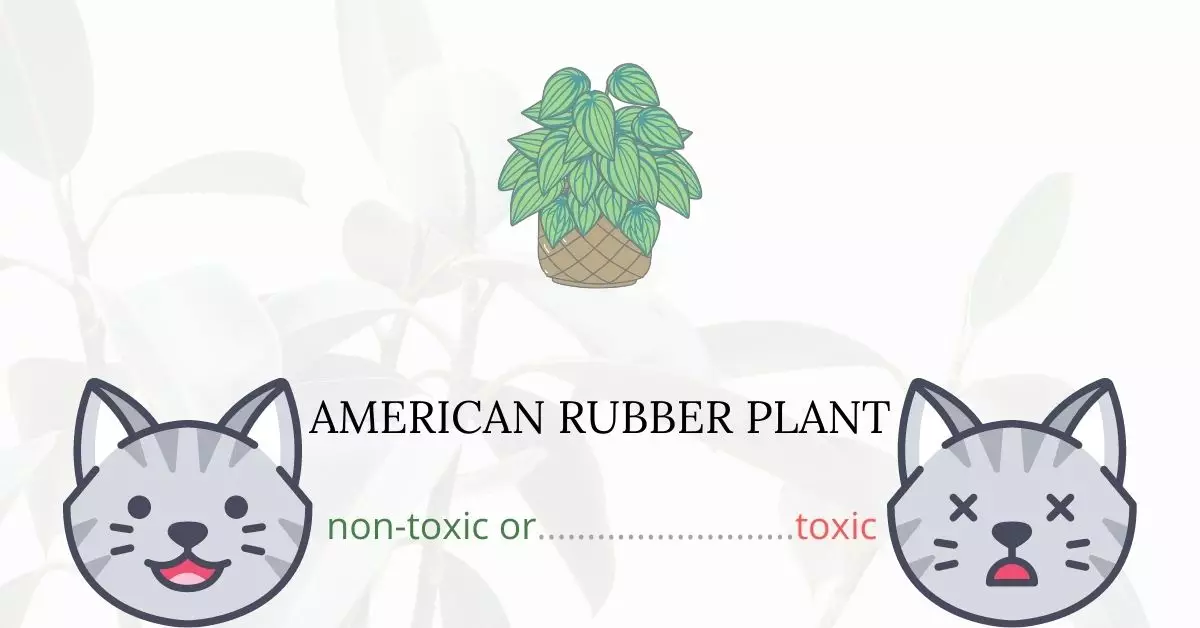American Rubber Plants are non-toxic to cats, while Pepper Faces can pose risks.
This article is a culmination of in-depth research and collaborative effort between experienced Doctors of Veterinary Medicine (DVMs) and our editorial team. We have synthesized information provided by these experts to offer accurate, relevant, and up-to-date insights regarding the potential risks various plants, including American Rubber Plants, can pose to cats. Furthermore, in our quest for accurate and reliable information, we have referenced high-authority resources such as the ASPCA and PetMD to ensure that every detail pertaining to each plant is verified and trustworthy.
American Rubber Plants are not only safe for cats but are also recognized for their air-purifying qualities, making them an excellent choice for houseplants. They require strong sunlight, regular watering, and a spacious container, considering they can grow into a four-foot-tall tree.
It is crucial, however, to not confuse the American rubber plant with Ficus benjamina, also known as the weeping fig or Indian rubber plant, which belongs to a different plant family and contains properties that are toxic to cats, dogs, and horses. By being aware of the distinct characteristics and needs of each plant, pet owners can ensure a safe and harmonious environment for their pets.
Can Cats Eat American Rubber Plant or Pepper Face?

While most plants from the Peperomia genus are non-toxic to your feline companions, it is highly discouraged to let your cats eat large amounts of an American rubber plant.
If swallowed, the American rubber plant can cause some pain in cats and kittens. However, if the plant is consumed in big quantities, your cat may experience nausea and vomiting.
This might cause gastrointestinal problems, inflammation of the mouth, and problems in the upper airways and stomach. If your cat has nibbled on an American Rubber plant, don’t worry. After the feline vomits up the foreign particles, the symptoms and pain normally go away.
What is American Rubber Plant or Pepper Face?

The American rubber plant, also commonly called pepper face, baby rubber plant, and oval-leaf Peperomia is a pepper family Piperaceae flowering plant. This lovely succulent houseplant is native to Mexico, Florida, and the Caribbean, and it has received the Royal Horticultural Society’s Award of Garden Merit.
Scientifically known as peperomia obtusifolia, the American rubber plant is an evergreen perennial with succulent, leathery leaves and spikes of green-white flowers.
The American rubber plant produces fleshy leaves and plants with variegated foliage thus, making them a popular choice as houseplants.
It produces little white flowers on spikes and has heart-shaped leaves that grow slowly but are quite lovely. It is delicate and will not tolerate frigid conditions; offer light, partial shade, and water just as needed.
Keeping Cats Away From American Rubber Plant or Pepper Face

Peperomia obtusifolia are widely cultivated as indoor plants. If you have one at home, it is ideal to put it in a place where your cat cannot reach it. You can also try building plant terrariums to fully prevent your cat from accessing your plants at home.
Limiting your cat’s outdoor access will also keep them away from your neighbor’s plants and poisonous plants that are growing outside.
Plants to Avoid For Your Cats
If you are a cat owner and unsure if the plants growing in your yard are harmful to your cats, check out this list of toxic plants for cats. You can also view our list of non-toxic plants for cats.





